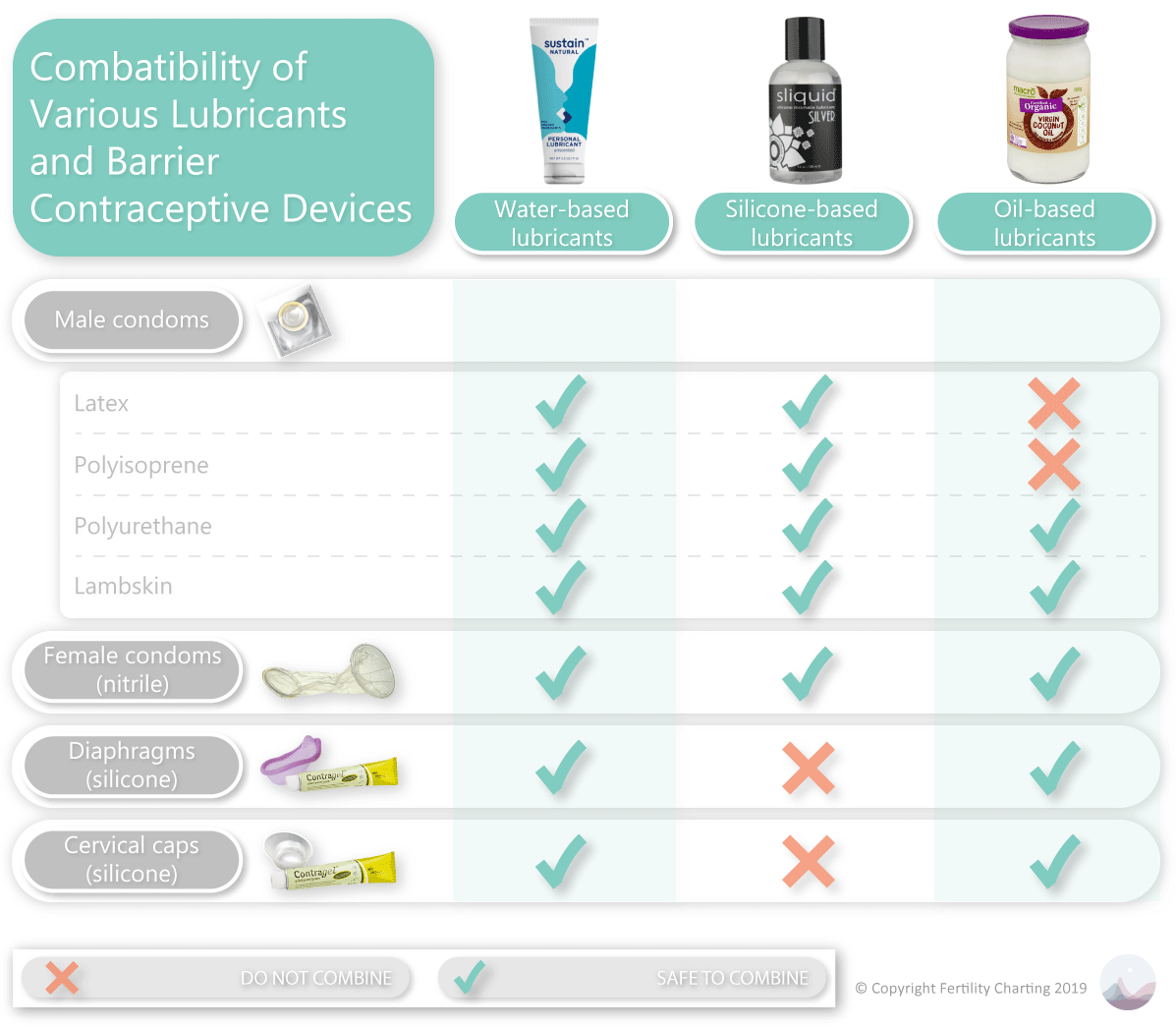Navigating the Fertile Window: Personal Lubricant
FINDING THE RIGHT LUBRICANT: SAFE FOR ME, SAFE FOR MY BARRIER METHOD
Personal lubricants need to be safe for your body and safe for your barrier method of choice.
SAFE FOR YOUR BODY
The vaginal canal is lined with mucus membranes which make it one of the most highly absorbent parts of the body. In addition to this, the vagina is populated with a complex ecosystem of bacteria, fungi and viruses. Together, they make up the vaginal microbiome. Lactobacillus is the most common vaginal bacteria. It secretes lactic acid and hydrogen peroxide which helps to keep the vagina at a healthy acidic pH.
When it comes to choosing a personal lubricant, it’s important to keep in mind the osmolality, pH levels and ingredients list:
Osmolality is a measure of how much of a substance is dissolved in another substance. There are three different types of osmolality when it comes to lubricants:
-
- Iso-osmotic lubricant: The cells of the lubricant are stable and there is no transfer of water between the cells of the vagina and the lubricant.
- Hypo-osmotic lubricant: The cells of the vagina absorb water from the cells of the lubricant. Unfortunately, this can cause the cells lining the vagina to burst and die as they absorb too much water. Hypo-osmotic lubricants are also damaging to sperm.
- Hyper-osmotic lubricant: The cells of the lubricant draw out water from the cells lining the vagina. At first, the lubricant seems to work well as the water being sucked out from the vaginal cells is producing plenty of wetness. Unfortunately, when the moisture is absorbed completely from the vaginal skin cells they are dried out and dead.Hypo/Hyper osmotic lubricants damage the protective function of skin cells lining the vagina and have been shown in some studies to increase the transmission of STIs such as herpes.
pH levels reflect how acidic or alkaline something is. The scale runs from 0 – 14. The lower the number, the more acidic. The higher the number, the more alkaline. Number 7 on the scale is considered neutral.
Our vaginas are largely colonised by lactobacillus bacteria which keep our vaginal pH at a healthy level of 4.5 and under.
During menstruation, the pH level of our vagina rises slightly as blood has a higher pH level than the vaginal environment. Cervical mucus around the time of ovulation also has a higher pH. This makes the vagina less acidic. The vagina is also rendered less acidic when in contact with semen (which has a pH of around 7.2 – 7.8).
When selecting a lubricant, it’s a good idea to pick one that will not interfere with the natural acidity of your vagina (the only exception to this is when you are trying to conceive, in which case you will want to encourage a more alkaline vaginal environment for the survival of sperm).
So what is a healthy lube pH? It’s recommended to stick to lubricants with a pH of between 3.5 – 5.5 (but the closer to 4.0 – 4.4 the better as this is a normal vaginal pH range).
Note: The anal environment is decidedly less acidic than the vagina. Lubricants designed with a pH for the vagina may sting in the anus!
Ingredients to avoid:
-
- Parabens are a type of preservative that can enter our bodies (remember how absorbent the vagina is?) and mimic oestrogen. They act as “xenoestrogens” in the body.
- Glycerine and Propylene Glycol are humectants which help lubricants to retain moisture. Unfortunately, they are a biproduct of sugar and can contribute to an overgrowth of yeast – hello, Candida! The same goes for any other sugars or sugar alcohols.
- Petroleum-based ingredients such as Vaseline or baby oil. These ingredients leave a coating inside the vagina that can interfere with your vaginal microbiome and increase the odds of developing bacterial vaginosis.
- Chlorhexedine Gluconate is an antibacterial and has been shown in studies to kill off lactobacillus bacteria. This could increase the risk of developing bacterial vaginosis.
- Benzocaine is a numbing agent – it’s not a good idea to numb your genitals during sex as pain is usually an indication that some physical damage is occurring.
- Polyquaternium-15 is a common additive to personal lubricant; however, it has been shown to potentially increase risk of HIV transmission.
- Ureas are sensitizers (used to increase sensation during sex) and may cause irritation for some people.
Want more information and recommendations for picking a lubricant that will be safe for your body? Dangerous Lily has a fantastic article which you can access here: http://dangerouslilly.com/lube-guide/
Looking to purchase lubricant in Australia? Try https://nikkidarling.com.au/, Nourished Life or Flora & Fauna.
Some of the safest lubricant brands are Sustain Naturals, Sliquid and Good Clean Love.
Some of the worst (but yet most common brands) include AstroGlide and KY Jelly, both of which have been shown to cause damage to the cells lining the vagina due to their osmolality!
SAFE FOR YOUR BARRIER METHOD
Personal lubricants not only need to be safe for your body; they also need to be safe for your barrier method.
You can reference the table below to make sure that you’re using the right lube with the right barrier method.
As a general rule, oil-based lubricants will degrade latex and polyisoprene condoms, and silicone-based lubricants will degrade silicone diaphragms and cervical caps.
However, if in doubt, always opt for a water-based lubricant.

